Human Element Breaks Down in Historic Camp Perry EIC Match on Electronic Targets
June 20, 2017
Civilian Marksmanship Program▸The First Shot▸Human Element Breaks Down in Historic Camp Perry EIC Match on Electronic TargetsBy Steve Cooper, CMP North General Manager
& Ashley Brugnone, CMP Writer
CAMP PERRY, OH – In disappointing fashion to all involved, the CMP had no choice but to cancel its June 17 Excellence-In-Competition match when significant damage was done to the target system following the successful completion of standing and rapid-fire sitting stages at 200 yards by nearly 100 competitors.
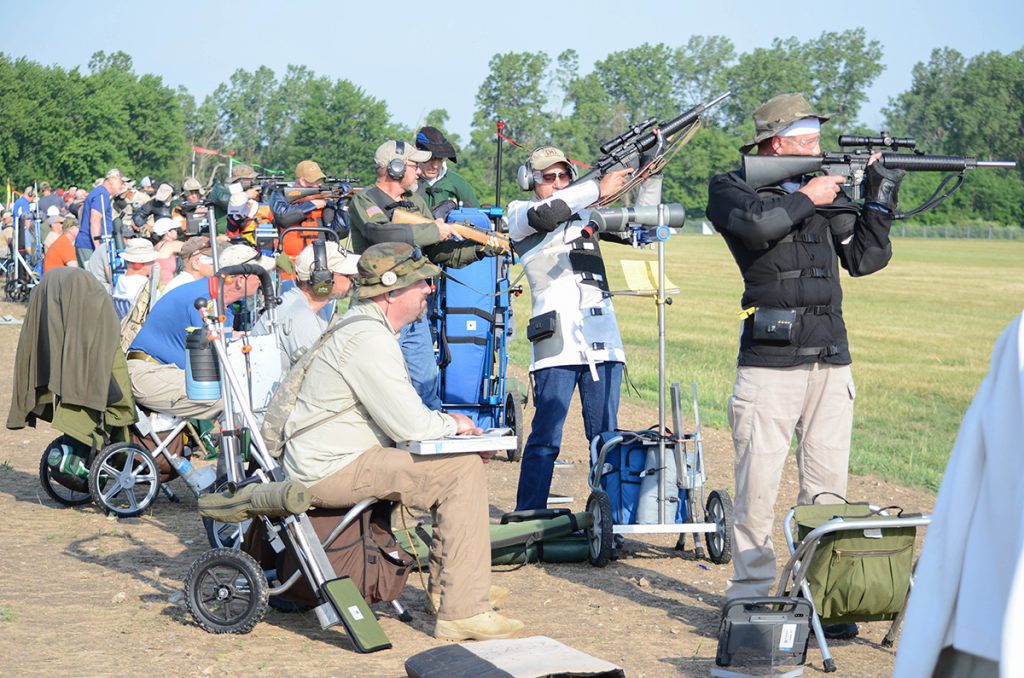
The match fired on Viale Range was a fill-in for a previously cancelled Ohio Rifle & Pistol Association event. The CMP EIC match was the historic debut of the latest in scoring technology on the “big” ranges at the 101-year-old Ohio National Guard training site near Port Clinton. CMP is in its second year of operating 10 electronic target lanes at 100 yards for rifle and five lanes for pistol at Camp Perry’s Petrarca Range. CMP also operates two 80-point electronic indoor airgun ranges at Camp Perry and Anniston, AL, respectively.
During the changeover from 200 to 300 yards at the Saturday event, multiple targets were damaged when newly-trained CMP target workers accidentally strained or tore several interconnecting cables on the target line while raising and lowering target carriers. Diagnostics showed several targets were showing errors, but CMP technicians believed many targets could be salvaged and some were repaired.
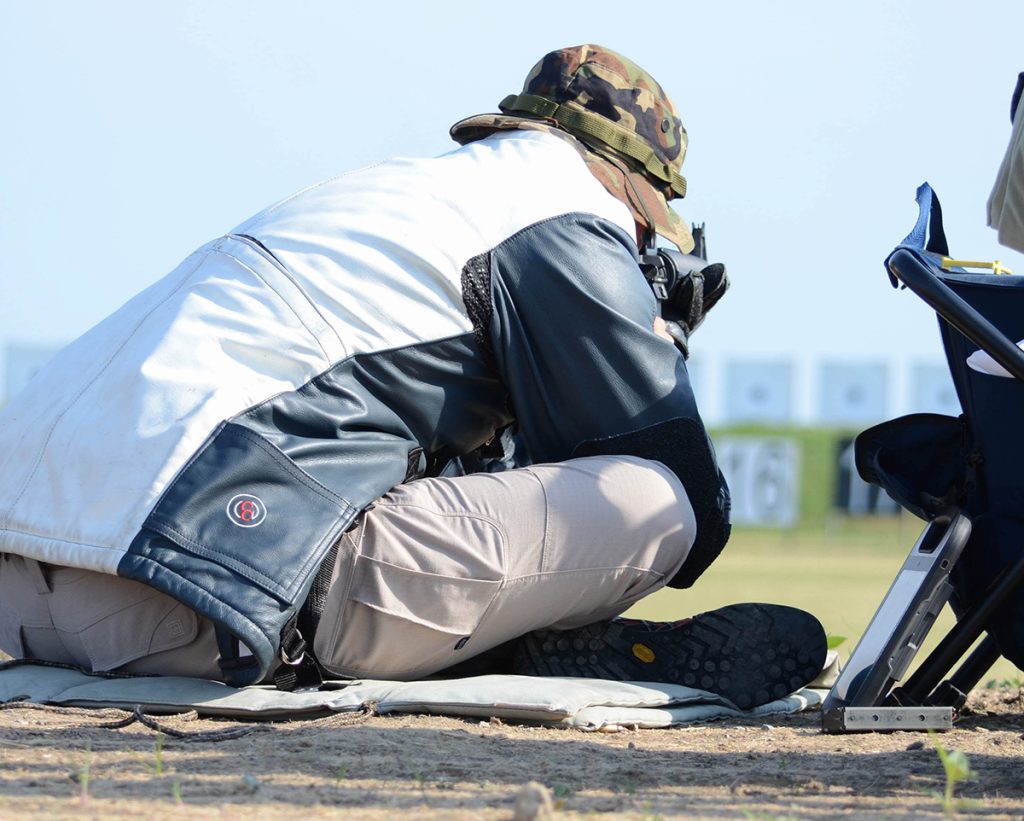
The loss cut the range from 35 to 19 serviceable targets. CMP staff and competitors agreed to shrink the size of the range, re-squadding shooters into more relays on the remaining working targets. After repairs were made, firing continued with the prone rapid-fire stage at 300 yards. When firing was complete, a handful of shooters received inconsistent information on their monitors. A re-fire was conducted for that group and many of the re-fire group still reported target errors.
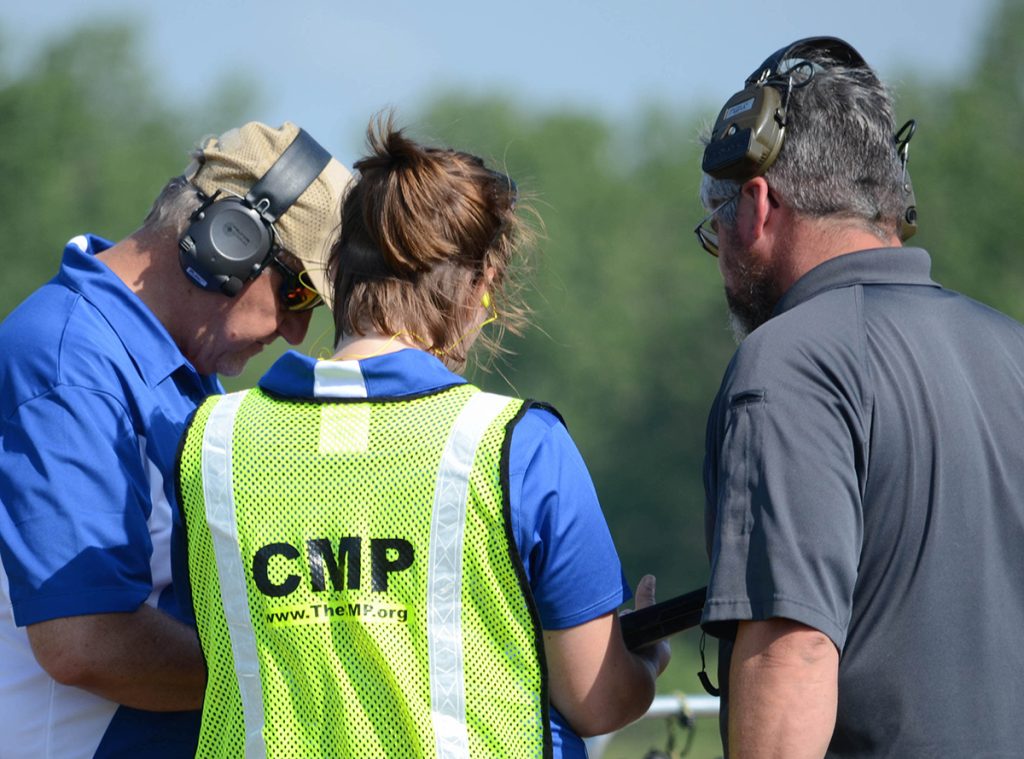
It became clear that the initial damage to the target communication system was worse than originally thought. Christie Sewell, CMP Programs Chief, explained to competitors that it was impractical to go any further and had no choice but to cancel the match. CMP offered refunds to all competitors or the option of crediting their entry fees to a future match. The match did not count toward the competitors’ EIC match total for 2017.
The Takeaway from this Experience – CMP is a Pioneer in the Electronic Target World
They say it’s easy to recognize pioneers – they’re the ones with arrows in their backs. It feels that way sometimes at the Civilian Marksmanship Program as we roll out the most sophisticated electronically-scored targets in the world to America’s bullseye rifle and pistol shooters. Sometimes we make mistakes and they cost us time, money and aggravation.
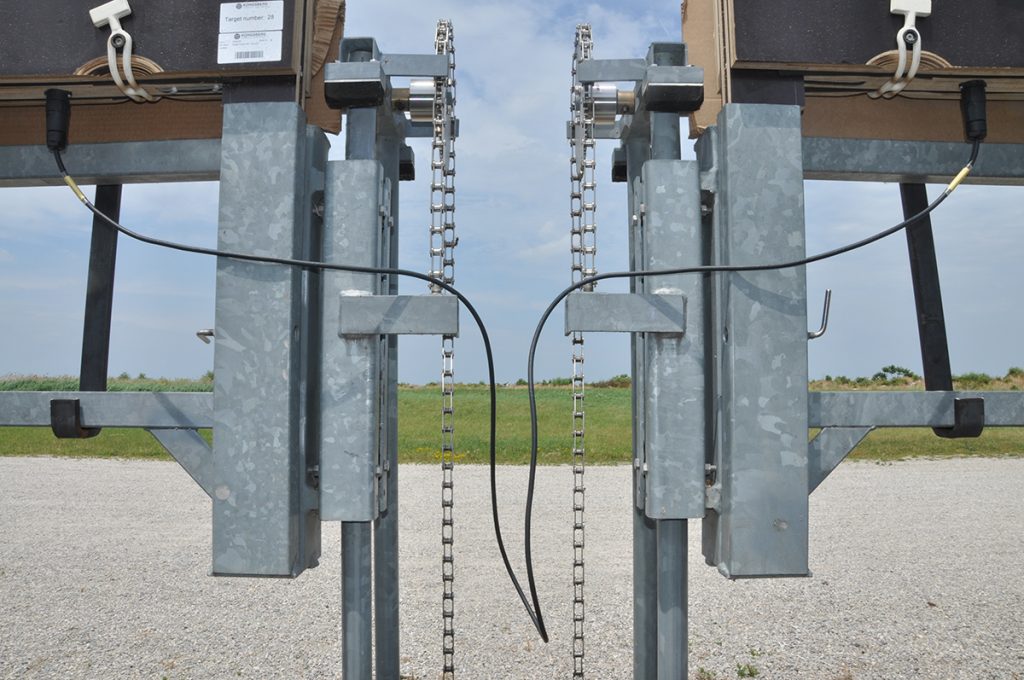
But we press on. And the competitors who understand our goals press on with us. We pull the arrows out of each other’s backs, cover shot holes with thick-skin pasters, learn from our mistakes and press on with our mission. That mission includes safety instruction, youth marksmanship fundamentals, growing the sport of bullseye target shooting and providing our competitors the best opportunity to maximize participation in this sport.
What Actually Went Wrong on Saturday
Those familiar with the KTS targets at the CMP Talladega Marksmanship Park know they are hard-wired and mounted to actuators that tilt the targets up and down for use on three different target lines. Shooters fire from a common covered firing line and fire distances of 200, 300 or 600 yards during open public sessions and matches without moving. Those targets are semi-permanent and fit into frames that are bolted to iron brackets mounted on a concrete deck. It’s a range unlike any other public range in the U.S.
In fact, the Kongsberg Target System targets at Talladega were not designed to be laid horizontally when not in use. They were also not made to fit into pit-served target carriers like those at Camp Perry. These targets were originally designed to stand upright 100 percent of the time. Conventional thinking is, if you want multiple distance targets, build multiple ranges.
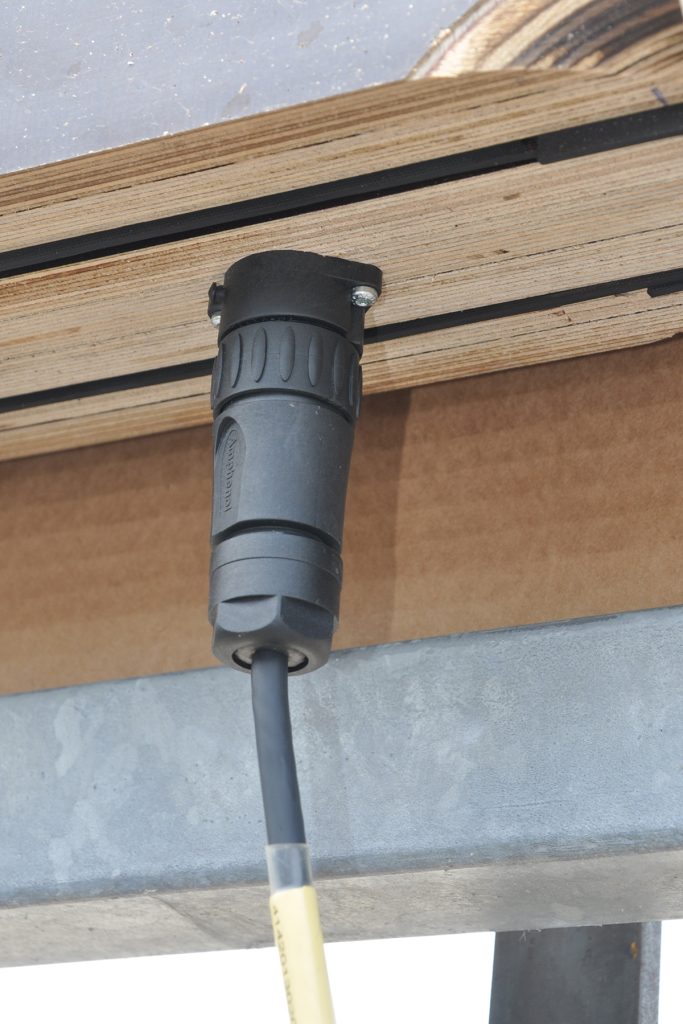
But CMP has pushed KTS into “Americanizing” their target systems – making them more robust and more flexible. We have taken these same static targets on the road and reassembled them onsite in Arizona, Oklahoma, N. Carolina, Vermont and other demonstration sites. The targets we just fired on at Camp Perry were used at Oklahoma and Camp Butner with wireless monitors and WIFI communication for the first time. With every road trip, we find ways to expand the limitations of the system and KTS is with us in stride, updating and upgrading hardware and software to accommodate our needs.
This traveling set of targets and WIFI communications system with wireless color monitors worked flawlessly at CMP’s Eastern Games at Camp Butner, N. Carolina.
For the first time, and in anticipation of installing KTS electronic targets across the spectrum of ranges at Camp Perry in 2019, CMP installed a set of electronic targets to fit into the target carriers on Viale Range. The wood 2×4 uprights which normally hold cardboard target backers were removed to make room for the KTS target frames. The e-targets were locked in and pinned in place to limit movement and to protect vulnerable electronics below the berm wall. We knew the connecting cables would need considerable care during transitions and we shared that with the young and exuberant range crew. Unfortunately in their minds speed and efficiency was a priority over care for the cables and the obvious occurred.
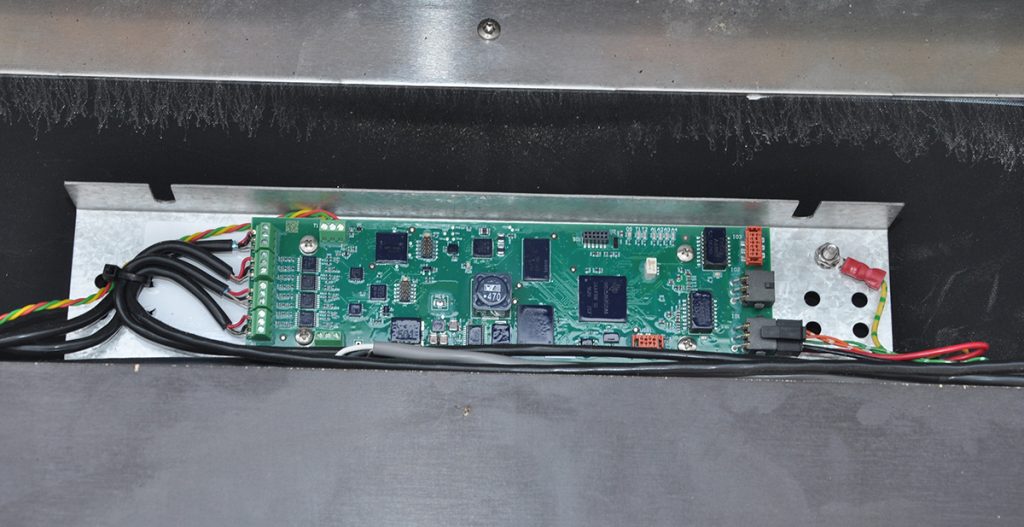
Each target contains a circuit board at its base and four acoustic sensors in the target’s four corners. Multi-conductor cables carry low voltage and communications information from target to target. All the bullet impact information sensed by the targets is communicated wirelessly via WIFI to monitors on the firing line. The targets are wired in clusters of five – “daisy-chained” the length of the target line.
On June 17, at 300 yards our freshly-oriented summer range crew, some of whom are accustomed to speedily pasting and putting paper targets back into the air, got a wake-up call. Because the targets are heavy, they must be mounted in the “up” position, which takes away the normally easy servicing of pit-pulled targets.
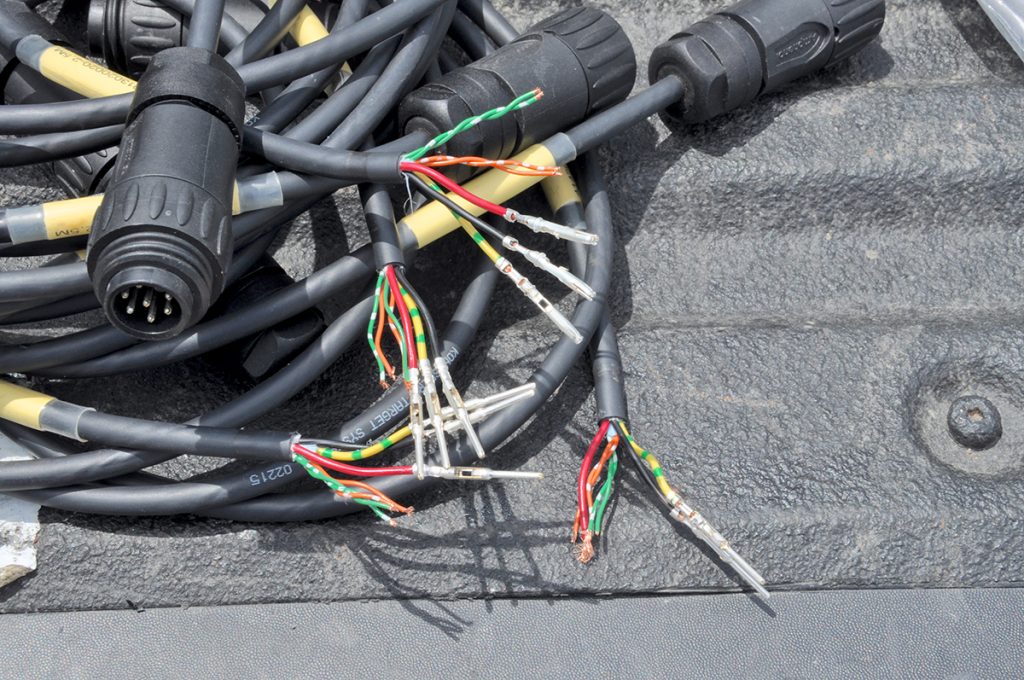
The crew planned to use ladders to change target faces on transitions from 200 to 300 and 300 to 600 yards during the match. However, when the ladders proved to be cumbersome and too slow, the crew opted to un-pin, lower and re-face the targets and send them back up. During that maintenance period, many of the cables got caught on frames and other obstacles and were either torn from connectors or the connectors and wiring were pulled from the circuit boards.
It was a truly catastrophic failure, but not a failure of the target system itself. The targets and WIFI functioned flawlessly during the 200-yard stage, where nearly 100 competitors fired three relays of standing slow-fire and three relays of sitting rapid-fire with no errors in just over 45 minutes.
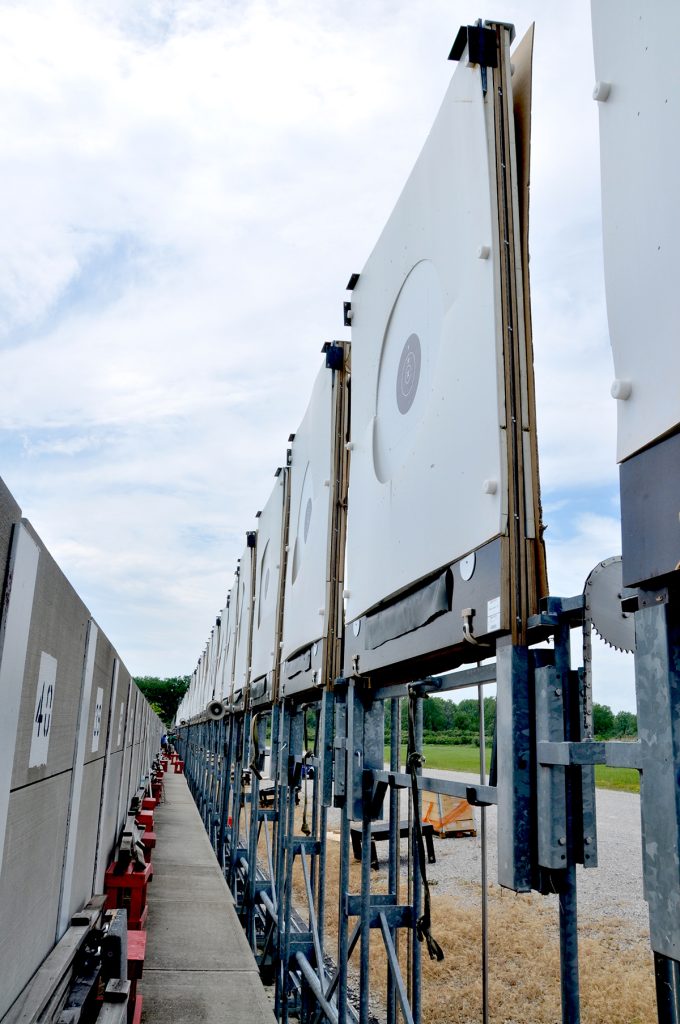
It was a difficult learning lesson for the crew and CMP management. In a post-match review, it was determined that 1) the crew was a bit overzealous in its desire to quickly raise and lower the targets to get them ready for the 300-yard stage, 2) had the cables been longer and/or handled with care, damage could have been completely avoided, 3) a better procedure needs to be developed to gain access to the target replacement centers without putting the crew or target equipment in harm’s way, and lastly, there was too little preparation time on an active rifle range to setup and practice target maintenance.
CMP management and staff completely empathize with our competitors. Many traveled and spent money to shoot a match that was not successfully completed. It was heartening to hear many competitors tell us not to refund their match fees, but to instead invest it in making the process better. In the process of showcasing electronic targets, it was lack of preparation and human error and NOT the performance of the target system that stopped this EIC match in its tracks.
As pioneers in this sport, the CMP has learned from these mistakes and we will repair and reinstall this same set of targets at Camp Perry. The time savings, decrease in competitor fatigue, efficiencies of processing large amounts of data and moving large numbers of people effectively during our matches all make the KTS system the model that makes sense for our sport’s future in our opinion. It’s clear the vast majority of competitors like the system and want it to succeed.
We thank those who see the big picture and look forward to sharing our successes with our competitors in 2017. We fully intend to fire the 2019 matches on KTS targets on Viale and Rodriguez Ranges at Camp Perry with great success.
Winnequah Rifle Club (Lodi WI) uses Silver Mountain Targets. They hosted the F Class Nationals without trouble. The sensors are located in front of the target carriers and have the added benefit of providing velocity.
I drove over 4 hours one way to attend this match. I would do it once a month if it will help you master this great improvement to our sport! The targets where amazing when they where working. The reality is mistakes happen, I make one every day, the folks I work with make one every day, it is totally unreasonable to not accept mistakes from someone else. The facts are an EIC match is 32 min and 10 sec of firing time per relay but we spend over 8 hours running a match if there are 4 relays. I can’t wait to shoot on these targets again!
I understand that it is a learning curve. I was not there, but I hope to in the future. Have you considered placing a rolling scaffold on the catwalk every 20-25 firing points for target repairs? Less cumbersome and more efficient.
I attended the Eastern Games this year and I thought the electronic targets were great. It does make the match go faster and saves competitor fatigue. I can also shoot more because there are more relays.
It is unfortunate this happened and even more unfortunate that the match was cancelled as a result. That said, I have no doubt the CMP will learn from the experience and adapt as necessary.
Hey – stuff happens – no doubt there will be success and failures as electronic targets replace traditional paper targets (and trips to the pits, etc). I’m glad to see you guys at CMP continue to work on electronic targeting systems. I think this will move our shooting sports games forward. I was on of those guys that was extremely apprehensive about “electronic scoring”. I’ve run a junior smallbore program for over 25 years. We used the Orion Scoring system for some of our smallbore and air rifle matches last winter. I cannot believe the time an effort the Orion system saved in scoring match targets. It used to take my volunteer staff hours to score thousands of bullseyes for a weekend event – each target card in air and smallbore rifle has 10 separate bullseyes and every last one of them had to be individually scored.
This summer one of my shooting buddies and I purchased a Silver Mountain electronic target for High Power practice – wow! We can now practice from 200 to 1000 yards at our range in waaay less time. We can shoot an 80 shot over-the-course practice match in less time. We can shoot several 20 shot strings in one evening from 1000 yards. Before, we were lucky if we could get in 2 – 20 shots strings in an evening (usually only 1 – 20 shot string). Using an electronic target for practicing at distance (600 – 1000 yards) gives the shooter almost instant feed back – an invaluable tool especially for young or new shooters (and old guys like me to). The electronic targets are expensive – but what an addition to our facility. Perhaps someday in the future we’ll be able to add more so we can have a full match with electronic targets at our range.
As a competitor that has attended the National Matches since 1988, I applaud your efforts – keep up the good work – we’ll get there. I must admit that I will miss the camaraderie in the pits – met of lot of nice folks from all over the world down there over the last 30 years – but I’m sure we’ll figure out a new way to strike up new conversations with new competitors as we wait our turn on the electronic targets as we move into the future – again – keep up the good work for the good of the shooting sports.
Tom Thompson
Thank you CMP and COMMENTERS for the good article and thoughtful comments from all sides. It truly shows the value of being open and transparent with your “customers” and the customer returning the favor by being honest and constructive. I just wish I didn’t have to wait until 2019.
I honestly find it difficult to read the that a major “Pioneer” CMP event had to be canceled due to Participants Errors. This new equipment is obvious it initial stage of development I.E. bit fragile and indeed requiring special handling and consideration. What shows, on surface at least, is that the situation was lost on people in pits. In past I’ve competed at Perry both ways back it the “good old days” of the IRON racks and then after the new improved Aluminum model replacements. In those decades of participation in “Pit Duty” it was often noted that range delays and match interruptions were as much people oriented than hardware. Some folks distracted by conversations with old buddies or new acquaintances would ripe the target holders down and up so hard the frames bounced out or broke. I honestly believe the CMP’s best intentions to provide up to date scoring experience could have proceeded with better results if the character of pit personnel provided empathy and understanding said new technology requires. Those individuals possibly know there part in failures and should consciously remind themselves to help by focusing on tasks at hand. In this case everyone suffered or everyone would have taken away different experience based on those hands.
Too bad. You’ll get it figured-out. I agree with John about the industrial cabling knowledge. I understand people being upset who drive there for the competition, but how many commenting didn’t and are just trying to add fuel to a fire? By the way that is a really neat system!
I hope this is helpful. Please consult with someone having knowledge to protect the cables similar to industrial equipment with translating cables in a cable track (DYNATECT). Simply making the cables longer will not prevent snags and damage. No worries if the targets don’t move and the cables can be secured. But if they move this added protection is merited and is why industrial equipment installations use this method routinely/always.
Only issue I see is the decision to unpin the carriers to allow the lowering/raising of the targets that were not designed to be raised/lowered. There are ways to mitigate the cable stress or exposure to being caught/stepped on during the process, but new cable runs could resolve that issue.
I shot in competition with both the pistol and rifle for many years from middle 1960s to the early 90s and cannot tell you how many times I had scores affected by the human element, mainly on the rifle side and often at large matches, specifically the National Matches. Scorekeepers not showing up, inattention to targets in the pit, slow target service and on and on. It dont take much to affect a good score, especially at the level where a point means a big difference. Almost always the human element. It is truely irritating. If you look at the damage displayed here it was either intentional or just plain stupidity. Give the elec targets a chance they should be good!
Now what I want to see is an article detailing the problems that cropped up and, more importantly, the steps being taken to mitigate those problems. I want to see changes that eliminate the opportunity for human error.
As a rifle competitor I look forward to using these targets in 2019 and beyond. Having participated in previous rifle events at the Nationals I know that many of the injuries and health issues were related to competitors having to perform pit duty. Competitors fall/jump off the trolleys, injure themselves working the target carriers, become overheated with the physical effort of working the carries, carrying large target boards around, and in one recent case (a few years ago) can get hit by deflected bullets and debris. Serving pit duty can also be a major stress in the hot summer months; a few competitors are transported off the ranges each year in medical distress. Beyond the safety benefits many competitors lose points due to pit errors, slow service, unanswered calls for marks, inadvertent pulls, and so forth.
I did participate in this match and I loved the immediate feedback the system provides; no need for a scope to score and staying in position between shots is much easier. I was also happy that I didn’t need to leave my gear and rifle unattended on the range to run off to the pits. I believe this technology is a huge step forward, at least in high-power rifle events. I expect we’ll see higher participation as matches run more quickly and safely, competitors have fewer complaints about their scores, no complaints about slow pit service or calls for marks, and the rather onerous pit duty is eliminated all together. Bravo to CMP for moving forward with this technology and being willing to work out the bugs and take the heat for early difficulties.
+1 on all that Jeffrey!! ( no fun spending 2 hours in the infirmary due to almost heat stroke !)
CMP is on the cutting edge of technology and I appreciate your honesty and specificity in fault analysis. By working on this right at Camp Perry you will be able to eventually drag Army technology to something better than the hit or miss, and where did that miss go and where on the target was that hit, that is currently Army marksmanship. The Marines still use the labor and target intensive KD targets but at least they clarify hit location, miss location and the effects of light, wind and weather. The electronic ones will do that, it just takes time to get the bugs ironed out such as having an anchored loop before the terminal to provide flexibility. I’m mostly a pistol shooter and still love the chance for a skidder 5 or watching the knucklehead next to me shoot a 7 on my would’ve legged, rapid fire target. And I enjoy the camaraderie of the pits during the Garand match. Shared joys and disappointments on paper targets build memories but having shot the airgun targets at Perry during the GSM course with Gary Anderson, I clearly see their merit. Especially as it saves so much time and more shooters can be accommodated and they get instant feedback without needing a scope. I look forward to giving the outdoor pistol electronic targets a try this summer.
Innovation is hard. Things happen. Personally, having done extensive time in the pits, I think automated targets are brilliant. Getting them fitted will take trial and error. Keep up the great work!
Nice explanation of the problem and I am encouraged to hear this system seems to be getting better with time. Nice to see the paper target in the frame with scoring rings. Has there been any attempt to correlate actual paper hits with the electronic results? In other words, does a shot that breaks the line get the higher score?
What if the targets went up and down as one like at Camp Butner NC? Replacing the centers would not be a problem then.
There is no progress without the experiences to teach us the directions in which we need to go. And Murphy goes with us along the way.
I live in South Africa where I am a firearms instructor on multiple platforms. The CMP publications are always eagerly received and enjoyed. All the staff involved in managing the unexpected event are to be complimented for the absolutely professional manner in which the issue was handled. The report (above) with photographs is absolutely world class and sets a bench mark for global corporations to follow in how to communicate a faux pas to interested and affected people. Well done!
‘Human Element Breaks Down??????” You’ve got to be kidding me. Hogwash! That is nothing but propaganda. GARBAGE!! How about “Electronic Targets Break Down?” That’s it…blame it on your volunteers who so generously do their jobs for us. See if you ever get them back again. I echo Jeff’s comments, also as a bullseye shooter. ELECTRONIC GARBAGE. Cables strung between target carriers…are you kidding me??? Insanity. I have a better idea…why don’t we just all sit by ourselves at home, like robots, playing an online shooting video game. Then we would never have to be inconvenienced again with being out in the bright, sunny, green world, communicating and laughing with our fellow shooters, telling stories, scoring and shaking hands, and sharing the camaraderie, as has been done at Camp Perry for over 100 years. All that is just way too annoying. GET RID OF THE ELECTRONIC GARBAGE!! GO BACK TO REAL SCORING LIKE WE HAVE DONE FOR WELL OVER A CENTURY!
I would suggest a connector assembly with ‘strain relief’. I’m sure Amphenol makes such an assembly, or the existing connectors could be upgraded. These type connectors(with strain relief) are commonly used in the aviation industry. Good luck, Rob
Wow! This in one of the best and prompt feedback/critical critiques back to customers I’ve even seen. I spent 30 years in the U.S. Navy and I’m now in academia. This a text book example of how to build and maintain trust with you customers! Thanks for the pictures and details and look forward to returning to the range. You guys and gals rock. Arrows be damned: pioneers press on!
I think your title blaming the “human element” may be placing the blame the wrong place. The human element that failed was the designers, builders and planners. To blame the pit crew is a distraction. The design did not stand up to real life.
Way to throw the pit crew under the bus. Their supervisors really are the ones to blame for allowing the protocol to be broken and for allowing the targets to be serviced in an unapproved way. Obviously the simple solution was the wrong one.
Technology is great when it works. This does sound like a great step forward, particularly when running a lot of competitors through a course of fire, and needing fewer people to actually run the targets. The downside is that electronic systems are more delicate, even as they are more reliable, and will need people familiar with the tech to run and service them when (not if) something goes wrong. I have to agree with the previous poster who pointed out there should be a contingency plan in place for when (not if) the new systems gets FUBAR.
I had the privilege of firing on these electronic targets at Camp Butner
Too many bullets, to little time!
I hope with the time savings these electronic targets provide, it will allow 40 shot GSVM matches by adding rapid sitting/kneeling.
Are the targets down for the season? I will be up there for rifle week in july and hoped to try them…
Rodger, we’ll have our electronic targets at Camp Perry on Petrarca Range. Competitors and visitors are welcome to try out the CMP Targets we have set up – 10 rifle targets and 5 pistol targets. Visit our website for more information – https://thecmp.org/competitions/cmp-targets-at-petrarca-range/.
Thanks for the honest article. No fake news here! Early adopters of technology have always lost connections, files, etc. Melding technology with real world habits and hardware has always been a challenge. As an earlier commenter stated, “contingencys” always need to be brainstormed as part of the process. I for one look forward to shooting bullseye on the electronic targets.
As a fellow bullseye shooter I assure you you will not be pestered by electronic targets while shooting a 2700. Since the NRA puts on 2700’s, not the CMP, you are in no danger of anywhere near that type of financial investment being put toward any NRA match. I drove over 2 hours to shoot the leg match Saturday and have no regrets at all. When’s the last time anyone saw 100 shooters at a leg match anywhere besides The National Matches or maybe the big games matches? We all knew the risks when trying out a new system. Without the electronic targets being there, I wouldn’t have showed. But I’ll be at the next one they put on with the electronic targets.
As a pistol shooter, personally I despise the very idea of electronic pistol targets. The reason MANY of us attend the National Championships is not because we actually think we are going to win. It is a week long vacation, talking with like minded individuals about our favorite activity. It’s walking to the target frames with the camaraderie of lamenting how great, how poorly we shot the string. It is walking up and gazing right and left and looking to see if it looks like anyone shot a perfect score. I don’t want to be rushed through a 2700. I want to walk down to the next range with my “Only good target” of the day, share it with my traveling buddy or my “once a year” friends I meet along the way. Electronic targets? BOO HISS.
I have spent the last 40+ years dealing with all forms of electronics and I can tell you that nothing will find design/implementation flaws like real world, field use. While catastrophic at the time, this might have been a huge blessing in disguise for the program. Simple redesign should overcome these issues with little or no problem.
Yea, it’s a shooting competition, not the moon landing. There are no contingencies for most games in life…
What a shame. However, this still begs the question why nobody had any CONTINGENCIES in place for this? Did nobody plan for a failure of the equipment either from something like this or an act of God (ie: lightning strike)? Could they not have continued with the match by disconnecting the targets and scoring everyone manually (as before)?
Sounds like someone did not plan for failures, and in the process, planned to fail.
We were confident the targets would perform as they did on the road at several CMP events earlier this year.
You did the best that you could and nobody faults you. Live and learn.
Now you know why I won’t be shooting the CMP matches any longer.